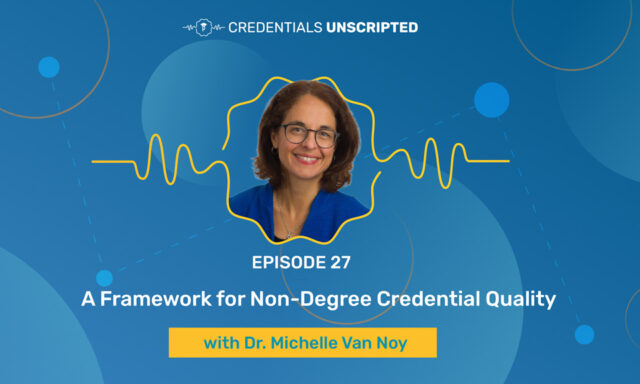As many higher ed state systems and institutions explore new ways to improve completion rates that have remained essentially stagnant since 2015, course sharing has emerged as an effective strategy to improve learner success.
By providing more opportunities for learners to complete their degree requirements, course sharing removes roadblocks that can occur when students have to rely on a single institution to meet all their learning needs. The result? Learners have greater flexibility to find course options when they need them, so they can graduate faster.
This sounds like a win-win situation for both learners and institutions, right? However, some enrollment managers express concern over the possibility of losing learners to other institutions as a result of course sharing. On a recent webinar, we asked Mike Vogt, Director of Strategic Planning & Operations at California Virtual Campus, and Adam Wilson, Director of Online Programs at the University of Tennessee-Martin to share their experience.
Watch Video
Swirl Happens…
Mike described his experience in California, where the California Virtual Campus was created to centralize the 116 colleges in the California Community College System into a single course-sharing platform to better meet student needs and increase on-time graduation. “We’ve got some really densely populated areas in California where you’ve got a lot of [learners] and a lot of institutions as well. And [learners] were already starting to do this self serve…by taking classes at different institutions simultaneously. We called that swirling. And so we were seeing where students were just kind of organically finding these opportunities, and that really drove that mandate from the legislature to say, ‘students are doing this already. Let’s make it easier for them’.”
Adam Wilson described a similar experience at the University of Tennessee-Martin. “We realize our [learners] are doing this already… we’d have a number of transient [learners] every semester that would be coming from other institutions in the system, or we’d be sending our [learners] there. They’re just taking a lot of extra steps, and it’s a lot more work on their side to get it done. We want to be centered on [learners] and make it easy for them to have success.”
Busting the Myth: The Impact of Course Sharing on Retention
For Mike, when it comes to the question of how course sharing impacts retention, “there’s definitely some paranoia out there.” He suggests enrollment managers are very concerned that they will lose learners to larger institutions that can offer learners more opportunity.
The California initiative eased these concerns by building reciprocity into their course-sharing agreements. “We definitely leverage the concept of a true exchange. So in order to be a teaching college, you have to be a home college… what they started to realize was that for every student who did take a unit somewhere else, they were getting students coming in. So there was no net loss really for any college in the system. And in a lot of ways, enrollment managers started to really realize, oh my gosh, this is a great tool to leverage to retain students!”
Mike goes on to add that as enrollment managers started to see this value, they began to create campaigns to re-engage students who were near graduation, but not currently enrolled. They were successfully able to pull learners back in, and at that point it really became a recruitment and retention tool for the colleges.
Course Sharing: An Everybody Wins Scenario
When thinking about the learner experience, Mike reminds us, “they’re already doing this [swirling]. You’re just making it easier for them to complete a degree with you. If anything, what we’ve seen is [learners] complete multiple credentials now through course sharing. So they will wrap up their program at their home college, which they weren’t able to do without it… then they might also stumble onto a micro-credential at the teaching college and say, ‘hey, you know what? I’m going to take two more classes with you. And now I have a credential from you and my home college’. So the student wins out, the teaching college wins out, and the home college ends up winning as well. So it’s truly an everybody wins scenario.”
What Else Can Course Sharing Do for Your Learners?
Take a deeper dive into the course-sharing initiatives at California Virtual Campus and University of Tennessee-Martin, and learn how the United Negro College Fund is implementing course sharing to increase access and academic opportunity. Watch the full webinar below.
Watch Video



